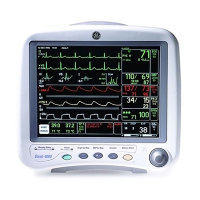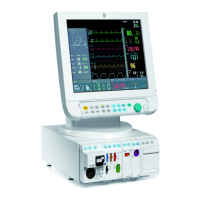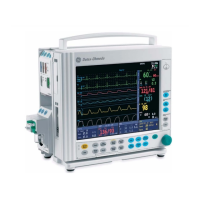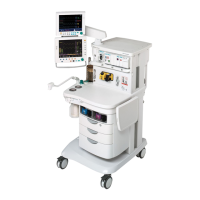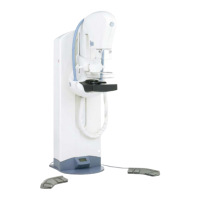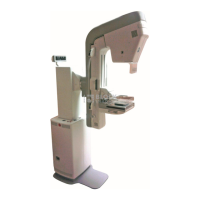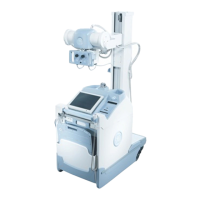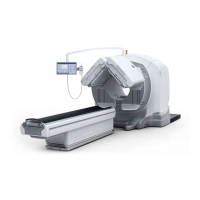12-6 Dash 2500 Patient Monitor 2042480-001 C
NELLCOR® OXIMAX® SpO2: Procedures
WARNINGS
Patient safety:
If you fail to apply the sensor properly, the patient’s skin could
be injured or the ability of the SpO
2
parameter to measure
oxygen saturation could be compromised. For example, a clip-
on sensor should never be taped shut. Taping the sensor could
damage the patient’s skin or impair the venous return, thus
causing venous pulsation and inaccurate measurement of
oxygen saturation.
Excessive pressure from the sensor may cause necrosis of the
skin.
For additional warnings and information, refer to the
NELLCOR
®
sensor’s directions for use.
Parameter performance:
When an SpO
2
sensor is on a limb that has a blood pressure
cuff, the SpO
2
data will not be valid when the cuff is inflated. If
SpO
2
readings are required during the entire blood pressure
determination, attach the SpO
2
sensor to the limb opposite the
one with the blood pressure cuff.
Remove nail polish and artificial nails. Placing a sensor on a
polished or an artificial nail may affect accuracy.
CAUTIONS
Patient safety:
Do not place any clip-on sensor in a patient’s mouth or on a
patient’s nose or toe.
Do not place a clip-on finger sensor on a patient’s thumb or
across a child’s foot or hand.
The sensor disconnect error message and associated alarm
indicate that the sensor is either disconnected or the wiring is
faulty. The user should check the sensor connection and, if
necessary, replace the sensor, NELL1 GE cable, or both.
Observe the sensor site to assure adequate distal circulation.
Sensor sites should be checked at least every 2 hours and
rotated at least every 4 hours.
Parameter performance:
Placing a sensor distal to an arterial line may interfere with
adequate arterial pulsation and compromise the measurement
of SpO
2
.
4. Select SpO2 from Setup parameters in the Main Menu and set up the
desired monitoring parameters.
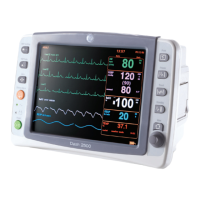
